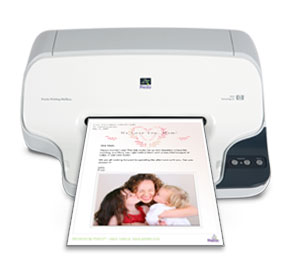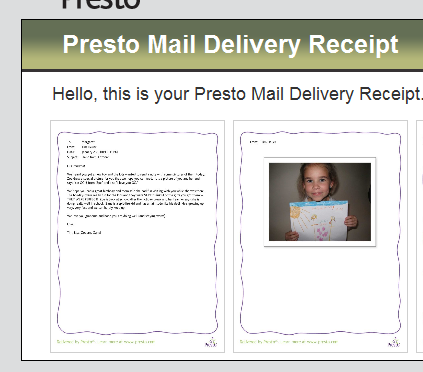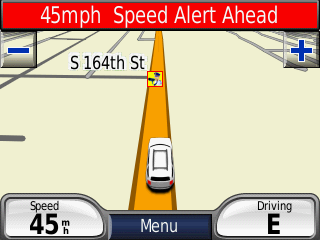I’ve written a few times about some of the controls that have been provided by organizations like Telerik and ComponentOne. I figured it would be a good idea to do a larger dump of those that I’m aware of (and hope you add comments to point me to others so I can amend this list) and help make you aware of them as well. There are a ton of great resources out there for Silverlight developers and I’m always impressed how our developer partners are extending our platforms to make tools for developers (and most of the time better than we do :-)).
Here’s my round-up of controls (alphabetically – links here will jump to their section):
Cellbi has a library called SvLite Effects which contains animations and controls such as:
- Carousel
- Wipe
- SlideShow
- Primitives
- Tweens
- Window
- ComboBox
- Accordion
A demonstration of these controls is provided on the SvLite Effects site.
(back to top)
ComponentArt recently announced their roadmap for Web.UI for Silverlight. While there is nothing downloadable as of this writing, they do have plans for a suite of controls for Silverlight that include:
- ContextMenu
- DataGrid
- Slider
- TreeView
- ItemFlow
- Menu
- Toolbar
- Upload
Some of their current preview demos are available on their technology preview site for the Web.UI for Silverlight controls.
(back to top)
ComponentOne extends their “Studio” line of products to include a Studio for Silverlight which currently includes a suite of controls:
- Accordion
- Book
- Chart
- Color Picker
- ComboBox
- Cube
- Data
- DataGrid
- DragDropManager
- Expander
- FilePicker
- Gauges
- HeaderContent
- HtmlHost
- Hyper Panel
- Image
| - Image Magnifier
- Image Rotator
- Layout Panels
- Maps
- Masked TextBox
- Menu
- MessageBox
- NumericBox
- Range Slider
- RichTextBox
- SpellChecker
- TreeView
- Uploader
- Window
- Zip
|
You can explore these controls using their Silverlight Control Explorer sample application.
(back to top)
No stranger to the control market, DevExpress hit the ground running early with releasing a DataGrid along with full source code. They have since added more to their Silverlight-specific controls:
- DataGrid
- Rich Text Editor
- Menu/Toolbar Controls
- Layout Manager
These can all be viewed using their online demos area of their site.
(back to top)
Another familiar name, probably most widely known to Visual Basic developers for FarPoint Spread, the team has seemingly been working on a set of controls for Silverlight. They are currently in “lab” form but include controls for:
- DateTime
- Numerics
- Mask edit
- Text input
- Calculator
- Error reminder
- Spin
As I noted, these are in lab form, but FarPoint has a preview build available and demonstrations on their lab site.
(back to top)
Divelements has had products for Windows Forms for a while and recently expanded to the WPF and Silverlight space specifically introducing new controls for Silverlight:
Take a look at their demonstration of a sample application leveraging both of these products in an Office-like UI.
(back to top)
Netikatech first showed up on my Silverlight radar with their Windows Forms implementation that was quite impressive. I had a chance to also meet with the company in Belgium and demonstrate this framework at MIX Essentials. They’ve since also released the GOA Toolkit for Silverlight which includes (in a few packages):
- Panels: Stack, Dock, Canvas
- ListControl
- Sizers, ContentPresenters, LocatedBorders
- KeyNavigator, Staters, DropDown
- GOAOpen library with full source code
A demonstration of implementing this toolkit is available at the GOA Toolkit Demo site.
(back to top)
Expanding their NetAdvantage product line, NetAdvantage Silverlight provides a set of controls for developers which Infragistics markets as Line of Business and Data Visualization controls:
- xamWebGrid
- xamWebTree
- xamWebOutlookBar
- xamWebEditors
- xamWebSpellChecker
You can view samples of these in the Infragistics line-of-business feature browser application. Additionally, they are providing visualization controls:
- xamWebChart
- xamWebGauge
- xamWebMap
- xamWebTimeline
- xamWebToolbar
These are some really great visualizers and they have interesting samples of all of them in their visualization sample application.
(back to top)
WebAqua.NET from Intersoft provides two controls that simulate a popular user experience most commonly found on the Mac OSX platform. In addition, Intersoft (as of Feb 2009) has also expanded to include data access controls and an additional presenter control. They provide:
- WebFishEye
- WebCoverFlow
- Presenter
- AstoriaDataSource
- WcfDataSource
- XmlDataSource
You can see a demonstration of both of these controls on the WebAqua.NET site and the demonstrator for the Presenter and data source controls.
(back to top)
This is an Open Source project being driven by the community and Silverlight MVPs, namely Page Brooks. This group of community folks have rallied to create some controls and framework libraries. Their current controls include:
- Color Picker
- Gauge Control
- Star Selector
- Enhanced Metafile
- Cool Menu
- Zip, Byte, String Utilities
- Animation Tweening
- Wheel mouse listener
This is great to see this community-driven type resources. Their demo application is also available for perusing here and you can download the bits/code on their CodePlex project site.
(back to top)
Who could forget the beloved Silverlight Toolkit! Coming from a team inside Microsoft, this is an Open Source project led by a team within Microsoft to provide a set of controls with full source code to developers to leverage, extend, etc. The controls are:
- AutoCompleteBox
- DockPanel
- HeaderedContentControl
- HeaderedItemsControl
- Label
- NumericUpDown
- TreeView
- WrapPanel
- Charting
- Expander
- ImplicitStyleManager
- Viewbox
- Set of XAML themes
The goal of this project is to provide some extended controls beyond the core that Silverlight provides with the assumption that some of the controls from this project may make it into future releases of Silverlight’s core framework. You can view the project and sample applications on the Silverlight Toolkit CodePlex project site.
(back to top)
Another significant Open Source project that provides a suite of controls/libraries in it’s distribution. As of now there are:
- Treeview
- Captcha
- Virtualized Stack Panel
- Dockpanel
- Flow layout
- Viewbox
- GoogleMap
- Virtual Earth
- Change tracker
- Binding comparer
- Bootstrap
- HTML Editor
The project also contains a set of utility libraries for handling mouse wheel, analytics, browser history, etc. Check out the SLExtensions Showcase for some demonstrations.
(back to top)
Another familiar face here in the .NET component world is the great team at Telerik. They came out early with some preview set of controls for Silverlight 1.0 and now expanded to a solid set of Silverlight 2 controls for RadControls for Silverlight which include:
- Calendar
- ComboBox
- ContextMenu
- CoverFlow
- Cube
- DatePicker
- Docking
- Drag and Drop
- Expander
- Gauge
- GridView
- Layout Panels
| - MediaPlayer
- Menu
- Navigation
- NumericUpDown
- PanelBar
- ProgressBar
- Slider
- TabControl
- TimePicker
- TreeView
- Upload
- Window
|
Check out their Silverlight demo application demonstrating all these controls, various skins and how they can be used. On the demo page they have also created 4 sample applications that implement their controls in various scenarios: Resume (CV) viewer, Media, Job board, and an automotive configurator.
(back to top)
Vectorlight has a suite of controls available for Silverlight 2 developers for free. You can also have the option to purchase the source code. Their controls include:
- Color Selector
- Dropdown
- Fieldset
- File Upload
- ItemViewer
- Main Menu
- Menu
- Popup controls
- Progress Bar
| - Rich TextBox/TextBlock
- Roller Blind
- Scroller
- Spell Checker
- Table
- TextBlock Plus
- Text Roller Blind
- TreeView
|
All of their controls and associated demonstrations can be found on the Vectorlight site.
(back to top)
One of the early comers to the control front for visualizations was Visifire, providing an Open Source implementation of some charting controls for Silverlight. They’ve continued to iterate on their offerings (and also provide commercial licensing) regularly. They provide charting visualizations for:
- 2-D Column
- 3-D Column
- Line
- Pie
- Bar
- Area
- Doughnut
- Stacked
- Bubble/Point/Scatter
Be sure to view the Visifire online gallery for samples of all these charts!
(back to top)
Many should recognize Xceed for their previous components in the Windows Forms world. Well, you may not have known this but they’ve been providing great controls for WPF and Silverlight? For Silverlight, they have:
You should really also check out their WPF DataGrid as well that just had an update released (and also has a FREE express version). It is very feature rich and should provide you with some great value in your applications. Information about the updated Xceed WPF grid can be found here. You can also view a demo of their Silverlight platform products on their site as well.
(back to top)
Open Source and Other Silverlight Projects
There are, of course, other Silverlight controls being developed by individuals. Here’s some that I’ve found as well (Open Source unless otherwise noted):
Media
Reporting
Utility/Input
Gaming/Graphics
Data Visualization/Charting
Themes/Styles
- reuxables: resource dictionaries for adding pre-configured themes to your Silverlight application
If you know of more, leave a comment!
(back to top)
Summary
So there you have it! A cast of characters for where you can get components and save time in your Silverlight application development. If I missed anyone, please comment and I’ll keep this list updated. I know there are a bunch of individual Open Source projects out there (heck, I’ve got my own as well), so if more people comment and surface those gems, I’ll add them here as well.
This is a great list of those extending our platform and making Silverlight great as well as helping you to be productive and concentrate on other aspects of your application versus building something that already exists. I’m a HUGE fan of buy versus build most of the time – especially in things like components.
I hope this helps!
 My uncle sent me a note the other day saying he equipped my grandmother’s home with a new gadget. A Presto device. He provided the new email address and said we could send notes and pictures to grandma. Intrigued, as I’ve never heard of this, I researched. Turns out this is a one-way device. I initially thought this would suck, but I think for the usage scenario of my grandmother, this would be great…albeit a bit analog.
My uncle sent me a note the other day saying he equipped my grandmother’s home with a new gadget. A Presto device. He provided the new email address and said we could send notes and pictures to grandma. Intrigued, as I’ve never heard of this, I researched. Turns out this is a one-way device. I initially thought this would suck, but I think for the usage scenario of my grandmother, this would be great…albeit a bit analog. 
 Recently though, I also found a guy who has organized all photo radar points into a database (you could create your own of course) and sells them for $10 for a 12-month subscription. Boom, done. Saves me the time looking them all up and I just have to click and they are uploaded. The database (which I found on eBay and he has
Recently though, I also found a guy who has organized all photo radar points into a database (you could create your own of course) and sells them for $10 for a 12-month subscription. Boom, done. Saves me the time looking them all up and I just have to click and they are uploaded. The database (which I found on eBay and he has 

